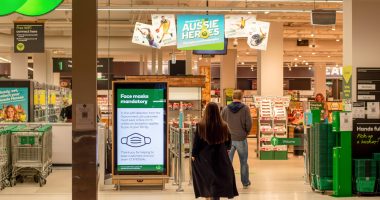- Australian property values increased by 1.3 per cent over November, marking the 14th month in a row that CoreLogic’s national home value index showed positive value growth
- The November update raises national housing prices by 22.2 per cent over the previous year, adding nearly $126,700 to the median value of Australian property
- Although prices continue to climb, the November result was the softest since January, when prices gained 0.9 per cent
- Capital city homes are now 37.9 per cent more expensive than capital city units based on median prices, the greatest disparity on record
Australian property values increased by 1.3 per cent over November, marking the 14th month in a row that CoreLogic’s national home value index showed positive value growth.
The November update raises national housing prices by 22.2 per cent over the previous year, adding nearly $126,700 to the median value of Australian property.
Although prices continue to climb, the November result was the softest since January, when prices gained 0.9 per cent. Since a cyclical peak in the pace of growth in March, when home values grew at a 2.8 per cent annual rate, there has been a discernible trend towards slower price growth.
According to Tim Lawless, CoreLogic’s research director, the slowdown in growth is attributed to a variety of factors.
“Virtually every factor that has driven housing values higher has lost some potency over recent months,” he said.
“Fixed mortgage rates are rising, higher listings are taking some urgency away from buyers, affordability has become a more substantial barrier to entry and credit is less available.
“Fresh listings are being added to the market faster than they can be absorbed, pushing total active listings higher. More listings imply more choice and less urgency for buyers.”
The patterns in major cities are becoming more diverse, with Brisbane and Adelaide now having the strongest rates of growth, while circumstances in Sydney and Melbourne have slowed more significantly. Brisbane and Adelaide are the only major cities that have yet to see a decline, with the monthly rate of growth in both cities reaching a new cyclical high in November.
“Relative to the larger cities, housing affordability is less pressing, there have been fewer disruptions from COVID lockdowns and a positive rate of interstate migration is fueling housing demand,” Mr Lawless said. “On the other hand, Sydney and Melbourne have seen demand more heavily impacted from affordability pressures and negative migration from both an interstate and overseas perspective.”
Houses continue to outpace units, with capital city prices increasing by 1.2 per cent and 0.7 per cent, respectively, during the month.
Capital city homes are now 37.9 per cent more expensive than capital city units based on median prices, the greatest disparity on record. In terms of financial value, a capital city home costs around $240,500 more than a capital city unit.
Housing prices in Australia’s combined rest of state’ areas increased by 2.2 per cent in November, more than double the monthly pace reported in the combined capital cities of 1.1 per cent.

-1280x720-800x430.jpg)
-1280x720.jpg?v=1)




